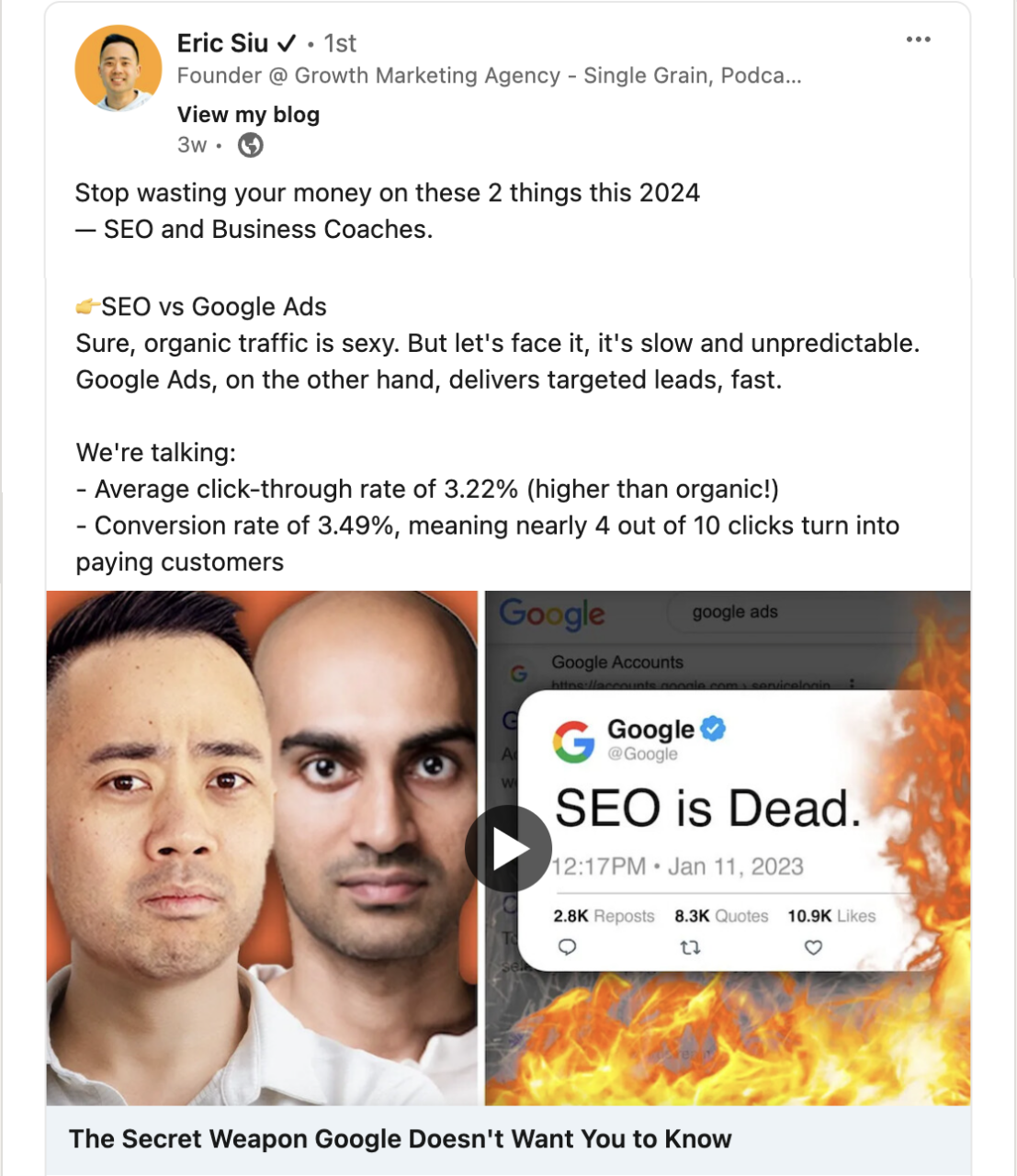Updated in July 2024.
With the right strategies, Pay-per-Click advertising can catapult a brand’s visibility, drive targeted traffic, and significantly boost conversions. However, the key to unlocking this potential lies in effective PPC optimization.
This comprehensive guide delves into the art and science of PPC optimization, offering invaluable insights for marketers looking to elevate their ad performance.
From understanding the fundamentals to mastering advanced techniques, we cover all the essentials needed to transform your PPC campaigns into powerful growth engines.
TABLE OF CONTENTS:
Understanding PPC Optimization: The Basics and Importance
What is PPC optimization?
PPC optimization is the process of enhancing your PPC advertising campaigns to achieve maximum efficiency and return on investment. It’s not just about spending money to gain visibility; it’s about spending smartly to reach the right audience at the right time with the right message.
The Basics of PPC
The foundation of any PPC campaign lies in its keywords, ad copy, targeting, and budget management. The goal is to attract high-quality traffic that is more likely to convert, rather than simply driving large quantities of visitors. This requires a deep understanding of your target audience, the search terms they use, and the kind of content that resonates with them.
To maximize the potential of your PPC campaigns at every step, it’s useful to have a PPC funnel in place:
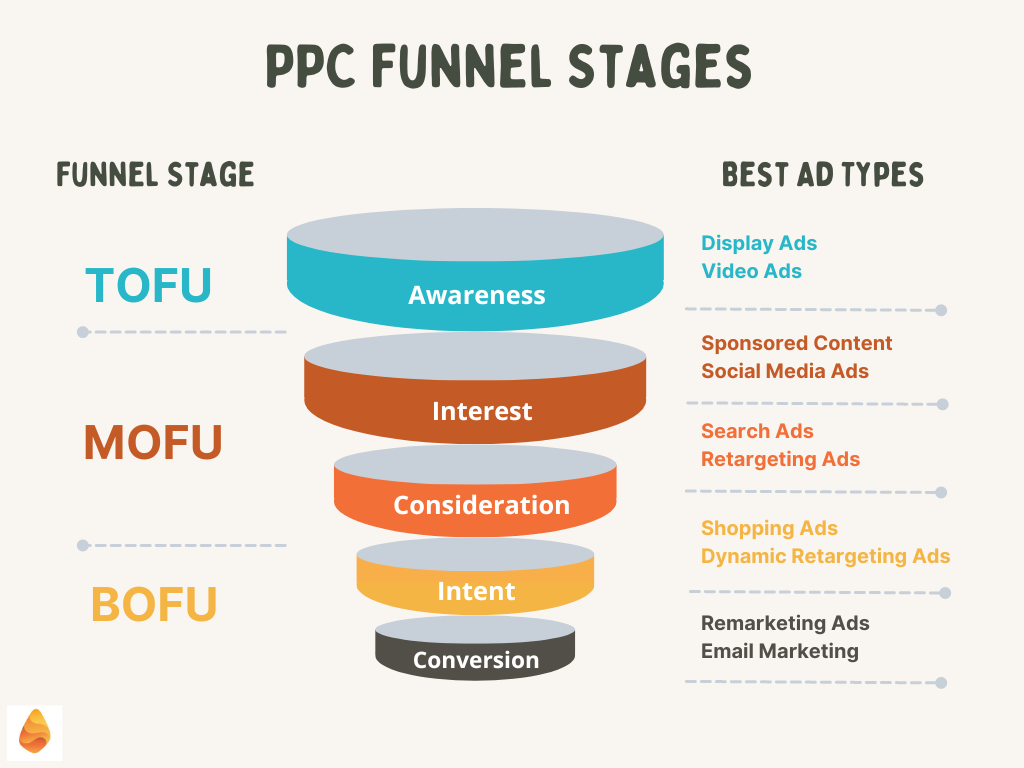
Importance of PPC Optimization
In the competitive digital advertising space, every click counts. PPC optimization ensures that your ad campaigns are not only seen but are also compelling enough to provoke the desired action, be it a click, a sign-up, or a purchase. It’s about getting the most out of your PPC budget by continually refining your campaigns based on data-driven insights.
These are some key elements of PPC optimization:
- Strategic Keyword Selection: Selecting the right keywords is pivotal. It involves not only identifying terms that your audience is searching for but also understanding keyword competition and cost. Effective keyword management helps in reducing wasted spend and increasing the relevance of your PPC ads to your target audience.
- Ad Copy and Design: Your ad’s copy and design are critical in capturing attention and driving action. A well-crafted ad speaks directly to the viewer’s needs and interests, and a compelling design ensures that your ad campaign stands out in a crowded digital space.
- Landing Page Relevance: The journey doesn’t end with a click. The landing page that your ad leads to must align with the promise made in the ad. It should provide a seamless user experience, meeting the expectations set by the ad and encouraging the desired conversion action.
- Continuous Monitoring and Adjustment: PPC campaigns require ongoing attention. Regular monitoring and analysis allow for quick adjustments in response to market trends, audience behavior, and campaign performance. This agility is essential in maximizing campaign effectiveness and ROI.
Keyword Selection and Bidding Strategies
Choosing the right keywords is the backbone of effective PPC optimization.
The goal is to identify the terms and phrases that potential customers use when searching for products or services like yours. This involves thorough research, using tools like Google’s Keyword Planner, to find high-volume keywords that are relevant to your business:

However, it’s not just about popularity; relevance and intent are key. For instance, if you’re selling luxury watches, keyword bids targeting broad terms like “watches” might not be as effective as more specific phrases like “luxury watch brands.”
Let’s take a look at keyword types, bidding strategies and negative keywords.
Understanding Keyword Types
Before diving into the types of keywords, it’s important to understand why this distinction matters.
Different keyword types offer varying levels of targeting precision, affecting how broadly or narrowly your ad group is triggered. The choice of keyword type impacts your campaign’s reach, relevance and, ultimately, its effectiveness in engaging the right audience. By selecting the appropriate type of keyword, you can better align your PPC campaigns with user intent, ensuring that your ads appear in the most relevant searches.
There are several types of keywords to consider:
- Broad Match: These are general keywords that can trigger your ads for variations including synonyms, related searches, and other relevant variations.
- Example: If your keyword is “running shoes,” your ad could show for searches like “athletic footwear,” “jogging sneakers,” or “trail running shoes.”
- Phrase Match: These keywords will show your ads for searches that include your exact keyword phrase in the order you specify, but might include additional words before or after.
- Example: For the keyword “women’s hats,” your ad might appear for “buy women’s hats online” or “stylish women’s hats,” but not for “hats for women.”
- Exact Match: The most specific type, where your ad only shows for searches that match your keyword exactly.
- Example: If your keyword is “organic coffee beans,” your ad will only appear when someone searches exactly “organic coffee beans” and not for searches like “best organic coffee” or “organic beans.”
Keyword Bidding Strategies
Once you’ve selected your keywords, the next step is to decide on your bidding strategy. This is how you determine the amount you’re willing to pay each time someone clicks on your ad.
There are several strategies to consider:
- Cost-Per-Click (CPC) Bidding: You set a maximum cost-per-click bid – the highest amount you’re willing to pay for a click on your ad.
- Ideal for: businesses focusing on brand exposure or traffic increase via search queries. For example, a new online store aiming to boost site visits might use CPC bidding to control costs while increasing visibility.
- Cost-Per-Acquisition (CPA) Bidding: Here, you pay for conversions rather than clicks, ideal if your main goal is conversions like sales or sign-ups.
- Ideal for: campaigns with a clear conversion goal, like online sales or sign-ups. A business with a proven sales funnel and a desire to optimize for conversions would benefit from CPA bidding, as it directly aligns costs with revenue-generating actions.
- Enhanced CPC (ECPC): These are automated bidding strategies that give Google the flexibility to increase your bid amount if the click is deemed more likely to lead to a sale or conversion.
- Ideal for: advertisers seeking a balance between manual and automated bidding, especially when running multiple campaigns. ECPC is beneficial for campaigns where specific click-to-conversion data is available, allowing Google to adjust bids for clicks that seem more likely to lead to a sale or conversion.

Negative Keywords: A Vital Tool
Negative keywords play a crucial role in the optimization of PPC campaigns. They are terms that you specifically choose to exclude from your campaigns to prevent your ads from appearing in irrelevant searches. This focus helps in saving your budget by reducing wasted clicks and ensuring that your ads are seen by a more targeted audience.
- Scenario 1: For instance, if you’re running an online store that sells new sports equipment, adding “used” or “second-hand” as negative keywords will prevent your ad from showing up in searches for used sports equipment, which is not relevant to your product offering. This way, you’re not spending your budget on clicks from people looking for something you don’t offer.
- Scenario 2: Another example of where negative keywords are beneficial is when you want to exclude a certain audience segment that is unlikely to convert. For example, if you offer high-end, premium services, you might want to add terms like “cheap” or “free” as negative keywords. This ensures that your ad groups are not shown to users who are unlikely to be interested in premium offerings, thus improving the quality of your traffic.
Overuse or incorrect use can limit the reach of your campaign excessively. For instance, if you sell adventure travel packages but add “beach” as a negative keyword, you might unintentionally exclude people searching for “beach adventure travel,” which could be a relevant audience for your business.
Keep in mind that it’s also important to use negative keywords judiciously.
A well-thought-out negative keyword strategy involves regularly reviewing search query reports to identify and exclude terms that are consistently not leading to conversions. This proactive approach not only saves budget but also refines your campaign targeting.
Regular Review and Adjustment
Keyword optimization isn’t a set-it-and-forget-it task. Regular review and adjustments are necessary. Analyze the performance of your keywords, and don’t hesitate to pause or adjust bids on underperforming keywords. Also, keep an eye on new advertising trends and terms in your industry to ensure your campaigns remain relevant.
Single Grain PPC Case Study
Peet’s Coffee reached out to Single Grain to improve their PPC strategy. This client had excellent brand awareness and digital marketing campaigns, but very little presence on Google Ads. Even though they saw a return from their existing strategy, growth was still stagnant.
We optimized their campaign for different types of keywords, bid on high-ROI keywords, such as branded and product name terms, and rewrote the ad copy to fit the landing pages better and focus on the UVP of the product.
The result? Peet’s Coffee saw a 455% increase in revenue and 676% more orders, all with a 158% increase in ROAS and a reduced 72% cost per order. This was thanks to our efforts aligning searcher intent with ad copy.

If you want to acquire new customers predictably, Single Grain’s PPC optimization experts can help you improve your ad strategy!👇
Ad Copy and Creative Optimization
The heart of any PPC campaign is its ad copy. Compelling ad copy is essential for attracting clicks and driving conversions:
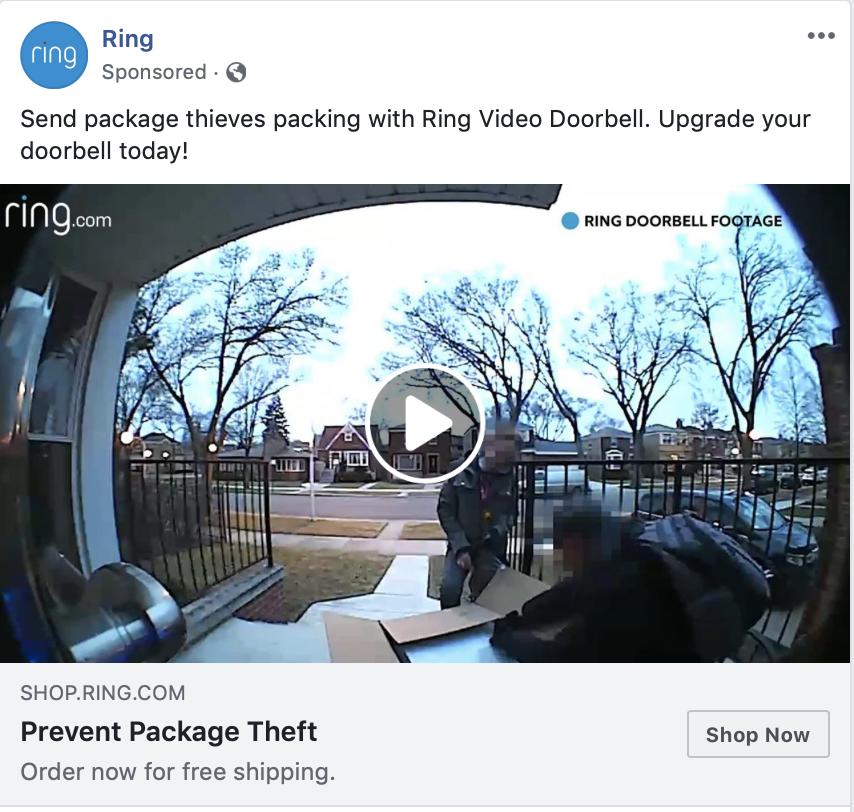
It should be clear, concise, and persuasive, highlighting the unique value proposition of your product or service.
For instance, if you’re selling eco-friendly cleaning products, your ad copy should not only mention that the products are environmentally friendly, but also emphasize their effectiveness in cleaning.
Key elements of effective ad copy:
- Headline: The headline is the first thing users see. It should be attention-grabbing and relevant to the keywords.
- Example: “Eco-Friendly Cleaners: Nature’s Power in Your Hands.”
- Description: This provides more information and should include a clear call-to-action (CTA).
- Example: “Shop now for eco-friendly cleaning solutions”.
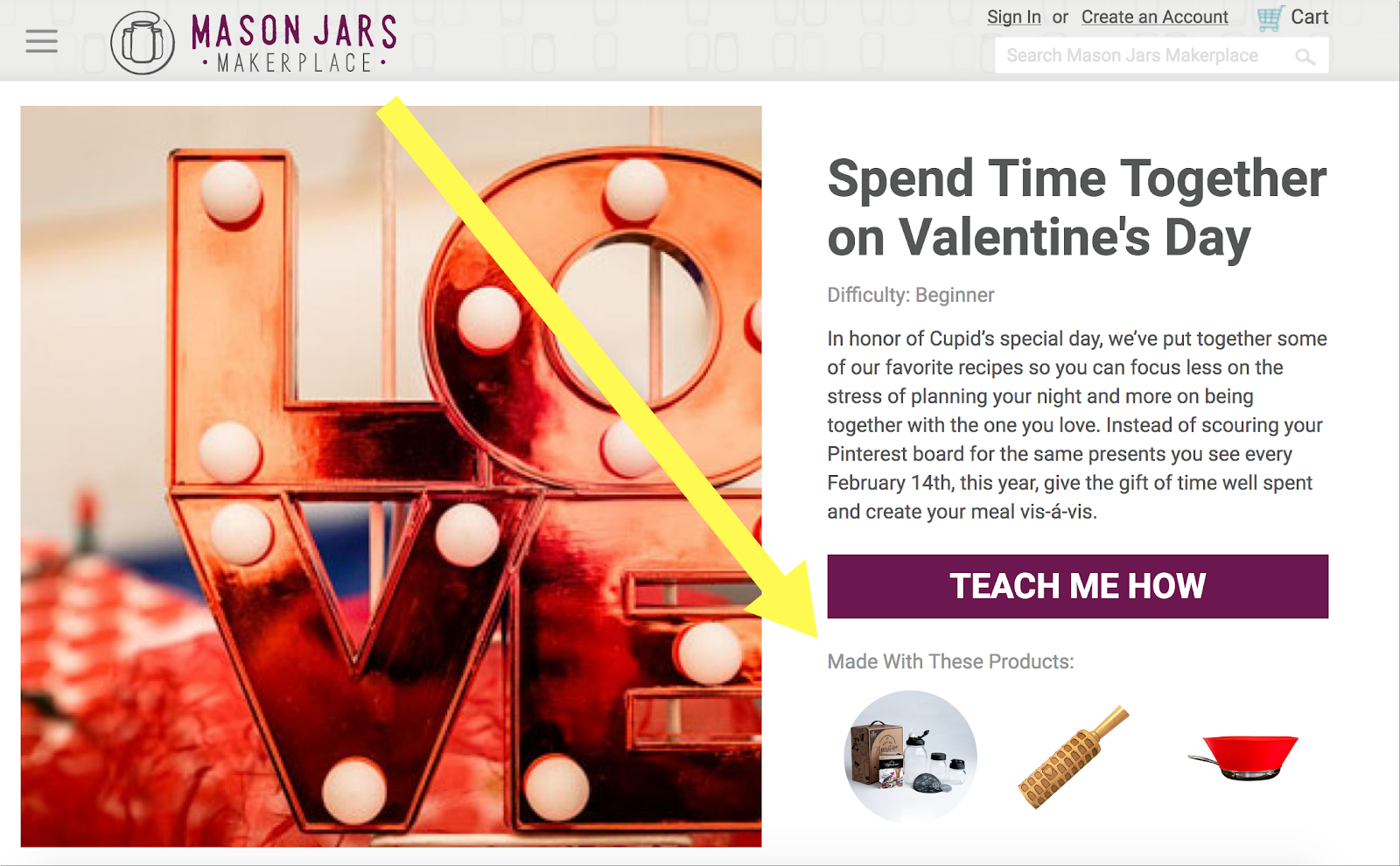
- Display URL: The visible URL in the ad, which can be optimized to include relevant keywords.
- Example: “www.GreenClean.com/Eco-Friendly-Solutions”
Using Emotional Triggers and Clear CTAs
Effective ad copy often uses emotional triggers – words that evoke emotions, such as happiness or curiosity – to connect with the audience. These triggers can significantly increase click-through rates by appealing to specific emotions.
Here are some examples of how you might use common trigger words in your ad copy:
- Happiness: “Bring Joy to Your Evenings with Our Handcrafted Aromatherapy Candles – Experience Bliss!”
- Urgency: “Limited Time Offer! Grab Your 30% Discount on Designer Shoes Before It’s Gone!”
- Curiosity: “Discover the Secret to Flawless Skin with Our Revolutionary Herbal Creams.”
At the risk of sounding redundant, it’s worth saying this again: A clear and compelling CTA is crucial. It guides users on what to do next, whether it’s to make a purchase, sign up for a newsletter, or learn more about a product.
Your CTA should be direct and create a sense of need or urgency, like these:
- CTA for a Purchase: “Shop Now and Transform Your Living Space with Our Exclusive Furniture Collection!”
- CTA for a Newsletter Sign-Up: “Join Our Community Today and Get Exclusive Tips on Healthy Living!”
- CTA for Learning More About a Product: “Explore the Features of Our Advanced Smartwatch – Your Fitness Journey Awaits!”
These examples demonstrate how integrating emotional triggers and clear CTAs can enhance the effectiveness of your ad copy, leading to higher engagement and conversion rates.
Creative Optimization: Beyond Words
While ad copy is vital, the creative elements like images and videos also play a significant role. These should be high-quality, relevant and aligned with the brand.
For instance, an ad for a travel agency might feature captivating images of destinations, drawing viewers into the experience.

One of the all-time best ad creatives is from Squatty Potty:

A/B Testing: Finding What Works
A/B testing is a powerful tool in optimizing ad copy and creative elements. By creating different versions of your ad and testing them with your audience, you can determine what resonates best.
For example, testing different headlines, CTAs or images can provide insights into what drives higher engagement and conversions.

Responsive Ads: Adapting to User Preferences
Responsive ads automatically adjust their size, appearance, and format to fit available ad spaces:

They can include multiple headlines and descriptions, which Google tests over time to learn which combinations perform best. This allows for greater flexibility and PPC optimization potential.
Performance Max Campaigns: Harnessing the Power of AI
Where human creativity fails, AI can help! Performance Max (PMax) campaigns leverage Google’s AI to optimize ad performance across various channels, including Search, YouTube, Google Maps, Display Network, and Gmail:

PMax uses Google AI to enhance your campaign’s performance. You provide a budge, goals, and key conversions, and it’ll take care of creatives, audiences, automated targeting, bidding, and budget optimization to maximize conversions across all Google platforms.
Performance Max can be a potent tool in your arsenal, but its effectiveness can vary by business type. For instance, B2B companies with longer sales cycles might find it less suitable. You’re only charged on a PPC basis for a PMax campaign, so the costs will fluctuate depending on ad relevance and market competition.
Dive Deeper: Best Marketing Strategies (Performance Max, Programmatic SEO)
Just want someone to do all the work for you? Single Grain’s PPC optimization experts can help you!👇
Landing Page Alignment and Conversion Optimization
The effectiveness of a PPC campaign is not solely determined by the ad itself, but also by the landing page it leads to, like this example from Slack:
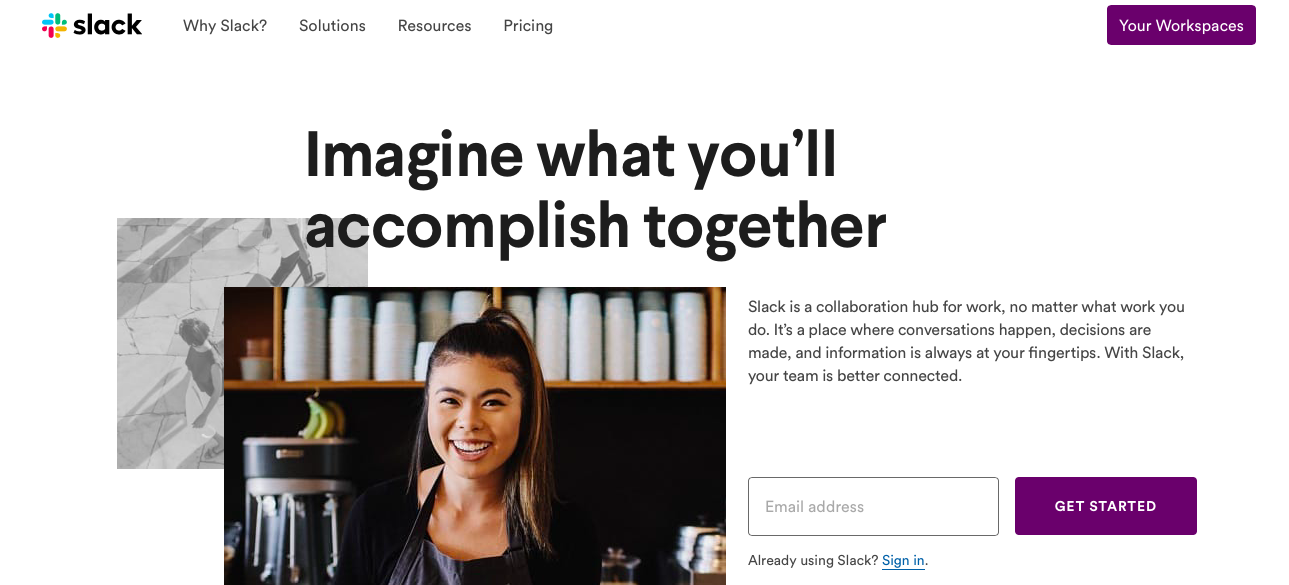
The alignment between the ad and the landing page is critical in maintaining the user’s interest and encouraging conversion actions. A well-aligned landing page directly reflects the promises and expectations set by the ad.
Key elements of an effective landing page:
- Consistent Messaging: The headline and content on the landing page should directly correlate with the ad. For example, if the ad promotes a 30% discount on skincare products, the landing page should prominently feature this offer.
- Clear and Concise Content: Avoid overwhelming visitors with too much information. Keep the content focused on the benefits and features relevant to the ad’s message.
- Strong Call-to-Action (CTA): The CTA on the landing page should be clear, compelling, and easy to locate. For instance, “Get Your 30% Discount Now” effectively prompts immediate action.
Conversion Optimization Techniques
Conversion optimization involves tweaking various elements of the landing page to maximize the number of visitors who perform the desired action.
Whether your goal is to encourage purchases, newsletter sign-ups, or downloads, each aspect of your landing page plays a crucial role in guiding user behavior towards these objectives:
- A/B Testing: Vital in understanding what resonates with your audience. By creating variations of your landing page and testing elements like headlines, images, or CTA buttons, you can identify which combination yields the best conversion rates. For example, testing different headline phrases or colors on CTA buttons can reveal user preferences that significantly impact conversions.
- User-Friendly Design: The user experience on your landing page should be seamless and engaging. This includes having a clean layout, readable fonts, and compelling visuals. Ensuring mobile-responsiveness is also critical, as a significant portion of web traffic is mobile. A user-friendly design not only keeps visitors on the page longer but also makes it easier for them to take the desired action.
- Trust Signals: Building trust is key to converting visitors into customers. Including customer testimonials or reviews can provide social proof, enhancing credibility. Displaying security badges, accreditation logos, or offering money-back guarantees can also reassure visitors of your site’s legitimacy and the quality of your offering. For instance, an e-commerce site displaying secure payment badges can increase customer confidence in making a transaction.

Additional CRO techniques:
- Loading Speed Optimization: A fast-loading page is essential. Slow loading times can increase bounce rates and reduce the likelihood of conversion.
- Clear Navigation and Minimal Distractions: Simplify the user’s journey to conversion. Avoid unnecessary links or information that could distract from the primary conversion goal.
- Personalized Experiences: Tailoring content to match user preferences or past behaviors can significantly boost engagement and conversions.
Use tools like Google Analytics to track user behavior on your landing page. Metrics such as time spent on the page, bounce rate, and conversion rate provide valuable insights into how well your landing page is performing and where improvements can be made.
Personalizing landing pages to match user interests or demographics can significantly increase conversions. Use data from your PPC campaigns to create more targeted and relevant landing page experiences.
Monitoring, Analysis and Continuous Improvement
Successful PPC campaign management is an ongoing process. It involves continuous monitoring, detailed analysis, and consistent efforts to refine and improve campaign performance. This iterative process is key to staying ahead in the dynamic digital advertising landscape.
Regular monitoring of your PPC campaigns is essential. This includes tracking metrics such as click-through rates (CTRs), cost per click (CPC), conversion rates, and return on ad spend (ROAS). Tools like Google Ads and Google Analytics provide real-time data that helps in understanding how your campaigns are performing.
Key metrics to analyze:
- CTR: Measures the effectiveness of your ad copy and relevance to the target audience.
- Quality Score: Indicates the relevance of your ads, keywords, and landing pages to user queries.
- Conversion Rate: Shows how well your landing page is performing in prompting the desired action.
Analysis: Deriving Insights from Data
Analysis goes beyond just looking at numbers; it’s about understanding what these metrics tell you about user behavior and campaign effectiveness. For example, a low conversion rate might indicate issues with your landing page or ad relevance. Analyzing data helps in identifying such issues and opportunities for improvement.
Continuous Improvement: The Path to PPC Optimization
Continuous improvement involves making data-driven decisions to enhance campaign performance. This could include refining ad copy, adjusting bidding strategies, or redesigning landing pages:
- Testing and Experimentation: Regularly test different elements of your campaigns, from ad copy to landing pages. A/B testing is a powerful technique in this regard.
- Responsive Adjustments: Be agile in your approach. Respond to performance data by making quick adjustments to optimize your campaigns.
- Leveraging Automation and AI: Use automated tools and AI-driven insights for more efficient campaign management and PPC optimization.
The digital marketing world is constantly evolving. Keeping up with the latest trends and understanding how algorithm changes might impact your campaigns is crucial. This proactive approach ensures that your PPC strategies remain effective and competitive.
Last Word on PPC Optimization
Navigating the world of PPC optimization can be both challenging and rewarding. As we’ve explored in this guide, successful PPC campaigns require a combination of strategic planning, continuous monitoring, and regular optimization.
From selecting the right keywords and crafting compelling ad copy to aligning your landing pages and rigorously analyzing campaign data, each step is crucial in maximizing the effectiveness of your PPC efforts.
Remember, PPC optimization is not a one-time task, but rather an ongoing process. As you apply these strategies, keep in mind that the ultimate goal is to connect with your target audience in a way that resonates and drives conversions.
Be patient, be curious, and never stop testing and learning. The insights you gain will not only improve your PPC campaigns but also enrich your overall marketing acumen.
If you’re ready to get the maximum return on your online advertising investment, Single Grain’s PPC optimization experts can help!👇
Related Video
Additional content provided by Alex Raza.
PPC Optimization FAQs
-
What is PPC optimization?
PPC optimization refers to the process of adjusting and fine-tuning pay-per-click (PPC) advertising campaigns to improve performance and achieve specific marketing goals. This involves analyzing performance data, identifying areas for improvement, and making strategic changes to campaign settings, ad copy, keywords and bids.
The objective of PPC optimization is to increase the efficiency and effectiveness of your advertising spend, maximizing the return on investment (ROI) by driving more qualified traffic, increasing conversion rates, and reducing costs per acquisition.
-
How do I optimize my PPC account?
Optimizing your PPC account involves several key steps that target different aspects of your campaigns:
- Keyword Optimization: Regularly review and adjust your keyword lists, adding new relevant keywords and negative keywords to improve targeting and reduce wasted spend.
- Bid Adjustments: Use bid adjustment strategies to optimize your bids for different devices, locations, and times of day, focusing your budget on high-performing segments.
- Ad Copy Refinement: Continuously test and refine your ad copy to improve click-through rates (CTR) and conversion rates, using clear, compelling messages that are closely aligned with your target keywords.
- Landing Page Optimization: Ensure that your landing pages are relevant, user-friendly, and optimized for conversion, providing a seamless experience from ad click to action.
- Use of Ad Extensions: Enhance your ads with extensions such as site links, callouts, and structured snippets to provide additional information and improve ad visibility.
- Performance Analysis: Regularly review campaign performance data to identify trends, successes, and areas for improvement, making data-driven decisions for ongoing optimization.
-
What is the difference between SEO and PPC?
The main difference between SEO and PPC lies in the approach and the nature of traffic generation:
- SEO focuses on improving website visibility and organic search rankings through optimization techniques such as keyword research, content creation, link building, and on-page optimization. The goal of SEO is to attract organic traffic without paying for each click.
- PPC, on the other hand, involves paying for advertising space on search engine results pages and other platforms. Advertisers bid on keywords relevant to their target audience, and they pay a fee each time their ad is clicked. The goal of PPC is to quickly attract targeted traffic by appearing prominently in search results or on partner sites.
-
What is PPC strategy?
A PPC strategy is a plan of action designed to achieve specific marketing objectives through pay-per-click advertising. This includes defining target audiences, selecting relevant keywords, setting budget allocations, creating compelling ad copy, choosing appropriate ad formats, and deciding on landing pages that will convert visitors into customers.
An effective PPC strategy also involves continuous monitoring and optimization of campaigns to ensure they are meeting performance goals, making adjustments based on data-driven insights to improve ROI.
-
How to improve PPC performance?
Improving PPC performance requires a combination of strategic adjustments, continuous monitoring, and data analysis. Here are some PPC campaign optimization tips:
- Refine Targeting: Use audience targeting options to narrow down your ads to users most likely to convert, based on demographics, interests, or previous interactions with your website.
- Optimize Ad Scheduling: Adjust your ad scheduling to show your ads at times when your target audience is most active and likely to convert.
- Improve Quality Score: Focus on improving your Quality Score by enhancing the relevance of your keywords, ad copy, and landing pages, which can lead to lower costs and better ad positions.
- Use Advanced Bidding Strategies: Experiment with different bidding strategies such as CPA (Cost Per Acquisition) or ROAS (Return on Ad Spend) targeting to optimize for conversions or revenue.
- A/B Testing: Regularly test different elements of your campaigns, including ad copy, landing pages, and call-to-actions, to find the most effective combinations.
- Leverage Analytics: Dive deep into analytics to understand user behavior and campaign performance, using insights to make informed adjustments.
